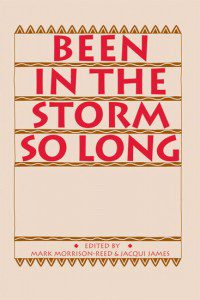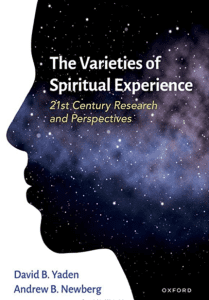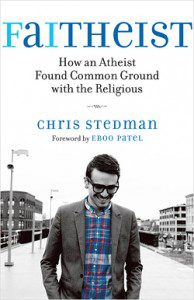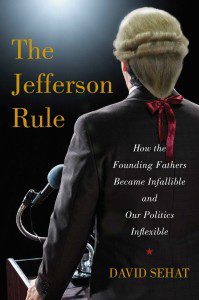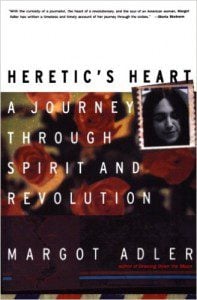Blackmail, blacklist, black mark. Black Monday, black mood, black-hearted. Black plague, black mass, black market
Good guys wear white, bad guys wear black. We fear black cats, and the Dark Continent. But it’s okay to tell a white lie, lily-white hands are coveted, it’s great to be pure as the driven snow.
Angels and brides wear white. Devil’s food cake is chocolate; angel’s food cake is white!
We shape language and we are shaped by it. In our culture, white is esteemed. It is heavenly, sunlike, clean, pure, immaculate, innocent, and beautiful. At the same time, black is evil, wicked, gloomy, depressing, angry, sullen. Ascribing negative and positive values to black and white enhances the institutionalization of this culture’s racism.
Let us acknowledge the negative connotations of whiteness. White things can be soft, vulnerable, pallid, and ashen. Light can be blinding, bleaching, enervating. Conversely, we must acknowledge that darkness has a redemptive character, that in darkness there is power and beauty. The dark nurtured and protected us before our birth.
Welcome darkness. Don’t be afraid of it or deny it. Darkness brings relief from the blinding sun, from scorching heat, from exhausting labor. Night signals permission to rest, to be with our loved ones, to conceive new life, to search our hearts, to remember our dreams. The dark of winter is a time of hibernation. Seeds grow in the dark, fertile earth.
The words black and dark don’t need to be destroyed or ignored, only balanced and reclaimed in their wholeness. The words white and light don’t need to be destroyed or ignored, only balanced and reclaimed in their wholeness. Imagine a world that had only light—or dark. We need both. Dark and light. Light and dark.
—Jacqui James, “Dark and Light, Light and Dark,” Been In the Storm So Long
A little more than a week ago, less than an hour from my home, there was a KKK Rally in Gettysburg, Pennsylvania. The good news is that the rally was small, involving only four men, wearing white hooded robes. And although overt racism continues in our county (and may even be on an increase of late), it has thankfully declined since the height of segregation. But that decrease in overt racism has helped distract from the more insidious racism that remains.
The opening quote from Jacqui James invites us to notice the ways that language shapes our perceptions of the world and unconsciously contributes to us having positive associations with the color white and negative associations with the color black. Many of these associations reflect an aspect of the systematic racism that remains entrenched in our society. But when we take a step back, it is so obvious that on the archetypal level, the colors white and black both represent vital parts of the human condition. And it becomes quickly obvious that we need both: dark and light, yin and yang — and everywhere in between.
Nevertheless, a color bias remains in our vocabulary. And social scientists have developed an “Implicit Association Test” to scientifically document the ways that this bias manifests in our unconscious. (You can take this test yourself free online at https://implicit.harvard.edu/implicit/.) To date, studies show that, “75 percent of its takers, including some African Americans, have an implicit preference for white people over black people.” The implications of these findings are troubling. As The Washington Post has reported: “An automatic white preference has been found to correlate with, for instance, suboptimal treatment of black emergency room patients, unfavorable judgment of black job applicants, [and] laughter at racist jokes.”
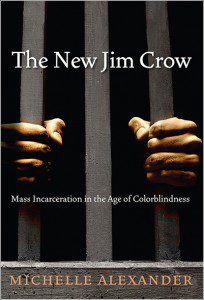 I have previously posted about Michelle Alexander’s important book The New Jim Crow: Mass Incarceration in the Age of Colorblindness. (If you have not read that book, I encourage you to do so; it was the “Common Read” selected last year as a recommendation for all Unitarian Universalists to read, discuss, and act on.) For now, I will limit myself to quoting only three statistics from Alexander. The first is about our growing Prison-Industrial Complex: “In 1972, fewer than 350,000 people were being held in prisons and jails nationwide, compared with more than 2 million people today” (8). The second and third quotes are about the racial bias with which our Prison-Industrial Complex is being built:
I have previously posted about Michelle Alexander’s important book The New Jim Crow: Mass Incarceration in the Age of Colorblindness. (If you have not read that book, I encourage you to do so; it was the “Common Read” selected last year as a recommendation for all Unitarian Universalists to read, discuss, and act on.) For now, I will limit myself to quoting only three statistics from Alexander. The first is about our growing Prison-Industrial Complex: “In 1972, fewer than 350,000 people were being held in prisons and jails nationwide, compared with more than 2 million people today” (8). The second and third quotes are about the racial bias with which our Prison-Industrial Complex is being built:
“No other country in the world imprisons so many of its racial or ethnic minorities. The United States imprisons a larger percentage of its black population than South Africa did at the height of apartheid” (6). “Today there are more African-American adults under correctional control — in prison or jail, on probation or parole — than were enslaved in 1850, a decade before the Civil War began.”
For this post, the main point is that there are barriers and biases — both conscious and unconscious — that affect our awareness of these shocking statistics, and thus inhibit our work for racial justice.
Recently, I’ve been reading a lot about the history of racial justice work among Unitarian Universalists, and one piece of advice that particularly stood out to me is from the black liberation theologian James Cone from 2001, when he was participating in a “three-day invitational consultation on theology and anti-racism at the Unitarian Universalist Association headquarters in Boston” (xiv). You can read the highlights of this conference in an excellent book titled Soul Work: Anti-racist Theologies in Dialogue. Knowing how slow progress can be against entrenched inequalities, Cone offered both caution and encouragement: “Set your pace as if you are going to that work for the rest of your life. There is joy in this work, because it enhances your humanity.” (14).
Both UUs and most religious progressives in general are clear that we don’t want to be part of perpetuating the problem of 11am being “the most segregated hour in America.” But, as is named in the opening quote of this post, there are often ways in which we are “unaware of habits of privilege and paternalism.” Let me say a little more about what I mean. The evidence is clear, for example, that over the past few decades, that Unitarian Universalists have made significantly more progress in our congregations related to gender equality and LGBT rights and than we have regarding racial equality. And that is not because we have not been trying. So the question becomes: what are we doing wrong?
Mark Morrison-Reed is a UU minister, who has written extensively both about his experience growing up as an African-American in Unitarian Universalism (which he calls a “White denomination”) and about the history of African-Americans in Unitarian Universalism. He invites Unitarian Universalist to consider that we are more of a “tribal,” “ethnic” group than many of us are conscious of. (There would, in turn, be parallels to many of liberal progressive groups.) He offers this scenario: if you were walking down the street in a large city and passed congregations that were “Filipino Baptist,” “African Methodist Episcopal,” or “Catholic church with services in Spanish,” most white religious progressive would in each case be able easily to see the tribal/ethnic characteristics of each in turn. And if most white religious liberals were to visit one of those congregations, then it would take significant time and effort to become acclimated to all the cultural differences.
Morrison-Reed invites us to have “eyes to see” that despite our best intentions, there are significant ways in which much of Unitarian Universalism remains a white, middle-class, professional, Eurocentric monoculture. And those who are not white, liberal European-American Protestants have to do a similar sort of cultural work to fit in that would be required for a white European to fit in to a Filipino Baptist, AME, or Spanish-speaking Catholic service. (If you’re remain unconvinced of the ways that too much of Unitarian Universalism has a white-bias, I invite you to Google “Stuff White People Like,” and consider that website in light of Morrison-Reed’s point.)
Unitarian Universalism remains a white, middle-class, professional, Eurocentric monoculture. And those who are not white, liberal European-American Protestants have to do a similar sort of cultural work to fit in that would be required for a white European to fit in to a Filipino Baptist, AME, or Spanish-speaking Catholic service. (If you’re remain unconvinced of the ways that too much of Unitarian Universalism has a white-bias, I invite you to Google “Stuff White People Like,” and consider that website in light of Morrison-Reed’s point.)
To support his point, Morrison-Reed points to how much easier it has been for white women and white LGBT folk to find a place in our congregations than for people of color. The reason, he says, I think rightly, is that white women and white LGBT folk already shared the white cultural norms of UUism as it currently stands (299ff).
These insights reminds me of a time in seminary when we were focusing on multiculturalism and racial justice work. I remember asking one my African-American classmates if she would tell us more about some of the times that she had experienced unintentional racism in our divinity school. I appreciated the candor of her response. She said, “Honestly, that sounds exhausting. I can’t save all you white people. You need to figure out a way to save yourselves.” I’ve thought a lot over the years about what she meant. And part of what she was saying relates to what Unitarian Universalists sometimes call “The Journey Toward Wholeness.” Limiting ourselves to a Eurocentric Unitarian Universalism undercuts the very ideals of UUism of radical interdependence, the beauty of diversity, and the centrality of justice for all people. And understanding our Universalism as about all people becoming part of a European monoculture is to recapitulate Europe’s past sins of colonialism and imperialism. Instead, in light of our worlds clear pluralism and diversity, a healthy, mature universalism is necessarily multicultural — and manifests the complex tapestry of what we call the interdependent web of all existence.
Along those lines, let me complicate matters a little more. Decades ago, the struggles for gender equity led us to see that the word “man” is inadequate to refer to both men and women. And at this point, gender inclusive language has become so standard that I can’t imagine returning to the old patriarchal norm. Likewise, many of us have become increasingly skilled at understanding the necessity of spelling out LGBT or LGBTQIA for “Lesbian, Gay, Bisexual, Transgender, Queer/Questioning, Intersex, and Asexual/Ally. And as we look toward becoming more adept and welcoming in regard to multiculturalism, many racial justice activists point out that the allegedly inclusive term “people of color” masks important distinctions between African-Americans, Latinos and Latinas, American Indians, and Asian Americans — each of which has important sub-groups.
In particular, many Latinos and Latinas point out that, “Our issues have more to do with culture and language than with race.” Thus, one UUA General Assembly workshop suggested that perhaps one small first step of becoming more welcoming would be to add “se habla Español” to the name tags of members of our congregation who speak Spanish. That is just one small step, and the journey to wholeness is long. But the vital part is to stay on the path toward inclusivity, welcoming, and multiculturalism — to keep taking that one, next, concrete action of building bridges and relationships of interdependence across differences.
And, yes, there are other vital issues along with racism: war and violence, classism, and climate change to name a few. And as daunting as each of these issues is alone, we make a mistake if we see them as in competition with one another. The Rev. Dr. Martin Luther King, Jr. said that “The Triple Evils of poverty, racism and militarism are forms of violence that exist in a vicious cycle. They are interrelated, all-inclusive, and stand as barriers to our living in the Beloved Community.” We need coalitions to face these interlocking oppressions together.
And although we do have a long way to go, and although we must confess that we have stumbled in the past, there is also much in our collective history to encourage us:
- In 1870, Meadville Theological School (one of our major UU seminaries) admitted its first African-American student.
- In 1889, Joseph Jordan was the first African-American ordained as a Universalist minister.
- In 1954, A. Powell Davies, Minister of All Souls UU in Washington, D.C. posted a list of integrated restaurants and requested that members use only these restaurants.
- In 1962, The Rev. Dr. Martin Luther King, Jr. was invited to deliver the prestigious Ware Lecture at the annual Unitarian Universalist General Assembly.
- In 1965, James Reeb, a 38-year-old, white UU minister from Boston and member of All Souls UU in D.C., answered the call to march for civil rights in Selma. He was beaten by white segregationists and died two days later. Dr. King preached the eulogy at his funeral.
Our challenge then becomes not only to know our history and to own our history, but also to take the next steps of making history for racial justice and multiculturalism in our own day.
For now, I will close with these words from the Peter Morales, the first Latino president of the Unitarian Universalist Association:
The tragedy — and it really is a tragedy — is that there are tens of thousands of Latinos, African-Americans, Asians, and, increasingly, people who come from mixed ethnic and racial backgrounds, who are UUs but do not yet know it. They are isolated, religiously homeless people. These are people who are living in two cultures, often feeling as if they belong to neither. They need the kind of community we provide; and we need them. They are the natural cultural and religious bridges to our more diverse future. But we do not reach these people…. And, especially, we never invite them to church. I am a recent UU, but I would have been a UU 20 or 25 years ago if someone had invited me and welcomed my family. My dream for Unitarian Universalism is that we confess that we do not have all the answers. We need to admit that this is hard work, that [Anti-Racism, Anti-Oppression, Multiculturalism] is as rigorous a spiritual discipline as we will encounter…. We not only have gifts to give each other, we are gifts to each other… Our journey toward wholeness has just begun. We are not sure of the way. We have often lost our way in the past, believing our destination was in sight and easily reached. We were a bit arrogant and a bit naive. We are wiser now. We know we will not get there soon. And we know we need to walk together and walk humbly. Come. Let’s us make that journey together. One step at a time; paso por paso. Hand in hand; mano en mano. Come. Leave no one behind. Together, we can make this journey. Come.
Notes
1 “Today there are more African-American adults under correctional control — in prison or jail, on probation or parole — than were enslaved in 1850, a decade before the Civil War began.” — Alexander, quoted in Charles Blow, “Escaping Slavery,” available at http://www.nytimes.com/2013/01/05/opinion/blow-escaping-slavery.html.
2 For more ideas similar to white people partnering with the NAACP, see Jonathan Wilson-Hartgrove, “Nonviolence for White People,” available at http://www.redletterchristians.org/nonviolence-for-white-people/.
3 In Black Pioneers in a White Denomination, Mark Morrison-Reed notes that looking at the few Unitarian Universalist congregation that have been more racially integrated, “the most successful [have been] those visibly active in race relations in their communities” (144). Other frequent factors seen in successful racial integration in congregations include “large urban areas,” “a large black middle class,” “intentionality,” and “time.” He continues that, “To distill this still further, it requires opportunity and commitment” (203-205). And on the frequently cited disjunction between liberal theology in UU congregations and more traditional Christian theology in many black churches, Morrison-Reed says that, “Despite the black church’s reputation for other-worldliness, it has met the needs of the present, Child care, food and shelter, funerary matters, the cause of civil rights, and voter registration are all concerns to which the black church has responded” (171).
4 The term “people of color” masks important distinctions — Soul Work: Anti-Racist Theologies in Dialogue, 168.
5 “Our issues have more to do with culture and language than with race.” — The Arc of the Universe Is Long: Unitarian Universalists, Anti-Racism, and the Journey from Calgary, 405
6 add “se habla Español” to the name tags — The Arc of the Universe Is Long, 291
7 The bullet-pointed dates from UU history are drawn from Journey Toward Wholeness: The Next Step from Racial and Cultural Diversity to Anti-Oppression and Anti-Racist Multiculturalism, 25-28. Also see Mark Morrison-Reed, Darkening the Doorways: Black Trailblazers and Missed Opportunities in Unitarian Universalism.
8 The final block quote from Peter Morales is from The Arc of the Universe Is Long, 405.
The Rev. Dr. Carl Gregg is a trained spiritual director, a D.Min. graduate of San Francisco Theological Seminary, and the minister of the Unitarian Universalist Congregation of Frederick, Maryland. Follow him on Facebook (facebook.com/carlgregg) and Twitter (@carlgregg).
Learn more about Unitarian Universalism:
http://www.uua.org/beliefs/principles


